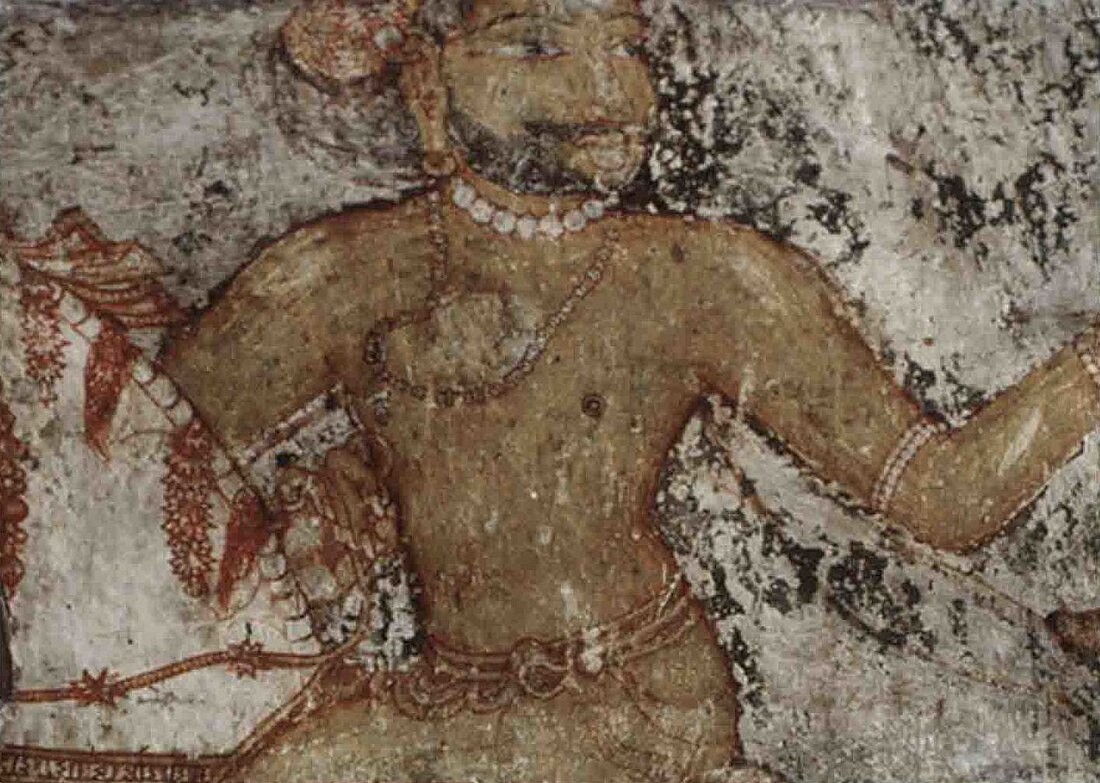Top Qs
Timeline
Chat
Perspective
Rama Rajasekhara
9th century Chera Perumal ruler from South India From Wikipedia, the free encyclopedia
Remove ads
Rama Rajasekhara (fl. 870/71 – c. 883/84 AD[2]) was a Chera Perumal ruler of medieval Kerala, south India.[3][4] Rajasekhara is usually identified by historians with Cheraman Perumal Nayanar, the venerated Shaiva (Nayanar) poet-musician of the Bhakti tradition.[4][3][1]
Rajasekhara presumably succeeded Sthanu Ravi Kulasekhara around 870 AD.[2][5] "Tripuradahana" and "Saurikathodaya", Yamaka poems by Vasubhatta, were composed under the patronage of Rajasekhara.[6] Two temple records, from Kurumattur, Areacode and Thiruvatruvay, Vazhappally, mention king Rajasekhara.[2] The former contain the only available "prasasti" of a Chera Perumal ruler of Kerala.[7][2]
Rama Rajasehara probably abdicated the throne toward the end of his reign and became a Shaiva nayanar known as Cheraman Perumal Nayanar.[2] He was succeeded by Vijayaraga (fl. c. 883/84-c.895 AD).[2]
Remove ads
Sources
Summarize
Perspective
"Shankaravijaya" by Vidyaranya refers to a Kerala king named "Rajasekhara" as a contemporary of the Hindu philosopher Shankara.[6] Similarly, "Shivanandalahari," attributed to Shankara, indirectly mentions the Kerala ruler as "Rajasekhara."[8] Rajasekhara is also tentatively identified with king "Co-qua-rangon" mentioned in the extant text of the Thomas of Cana copper plates.[9]
Ramadeva
Laghubhaskariyavyakhya, a mathematical commentary composed in the court of king Sthanu Ravi Kulasekhara in 869/70 AD, mentions a Chera royal called "Ramadeva", who "marched out to fight the enemies on getting information from the spies".[10] A possibility identifies Ramadeva with Rama Rajasekhara.[11] Ramadeva is described as a member of the Solar Dynasty ("ravi-kula-pati") in Chapter IIII, Laghubhaskariyavyakhya.[10]
Patron of Vasubhatta
Vasubhatta, the famous Yamaka poet of medieval Kerala, names his patron king as "Rama" in his "Tripuradahana" and "Saurikathodaya".[6]
"Tripuradahana" refers to Rama Rajasekhara as follows:[6]
There ruled a king who was bowed to by poets, the sight of whose army scattered his enemy kings, who was as steady in punishing the wicked as ready in succouring the righteous, whose conduct was above calumny, who was extolled as the foremost of kings (rajasekhara = Siva) in being wealthy (bhutidhara = a smearer of ashes) in having proboscis-like arms (vyala-pati-sphurat-karam = serpent entwined arms) and in bestowing wealth upon the supplicants at his feet, who was considered as an incarnation of Rama himself in the sameness of his name, with the hero of the Ramayana and in (the identity of purpose) raksopayam (protection of his subjects: danger to Raksasas). In the reign of this king who was pleasing the eyes of his subjects...
Another poem by Vasubhatta, the "Yudhisthiravijaya", says that "Kulasekhara" was the regnal title of his patron king.[12] Two later commentaries on the poem "Yudhisthiravijaya ("Vijayadarsika" by Acyuta and "Ratnapradipika" by Sivadasa) argues that "Rama" was the personal name of the king with regnal title "Kulasekhara".[6] Modern scholars generally consider this a result of confusion on the part of the commentators Acyuta and Sivadasa (between Sthanu Ravi Kulasekhara and Rama Rajasekhara) who were separated in time from the Chera rulers.[12]
Some scholars also identify king Rama Kulasekhara as the patron of poet Vasubhatta (and thus placing Vasubhatta in 11th-12 centuries AD).[13] This view is generally found unacceptable on several counts.[14]
Remove ads
Epigraphic records
Remove ads
References
External links
Wikiwand - on
Seamless Wikipedia browsing. On steroids.
Remove ads



